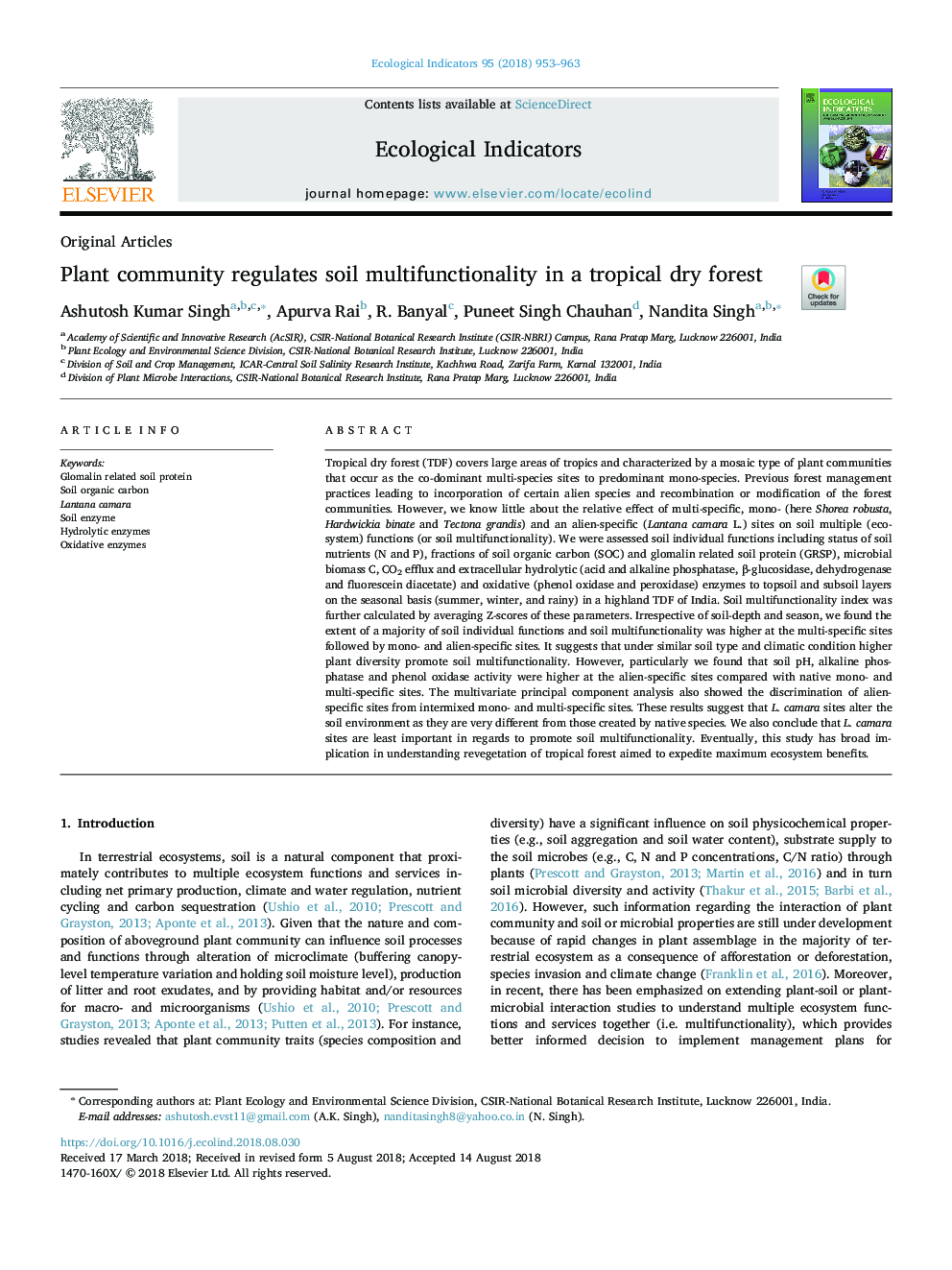| Article ID | Journal | Published Year | Pages | File Type |
|---|---|---|---|---|
| 10110058 | Ecological Indicators | 2018 | 11 Pages |
Abstract
Tropical dry forest (TDF) covers large areas of tropics and characterized by a mosaic type of plant communities that occur as the co-dominant multi-species sites to predominant mono-species. Previous forest management practices leading to incorporation of certain alien species and recombination or modification of the forest communities. However, we know little about the relative effect of multi-specific, mono- (here Shorea robusta, Hardwickia binate and Tectona grandis) and an alien-specific (Lantana camara L.) sites on soil multiple (ecosystem) functions (or soil multifunctionality). We were assessed soil individual functions including status of soil nutrients (N and P), fractions of soil organic carbon (SOC) and glomalin related soil protein (GRSP), microbial biomass C, CO2 efflux and extracellular hydrolytic (acid and alkaline phosphatase, β-glucosidase, dehydrogenase and fluorescein diacetate) and oxidative (phenol oxidase and peroxidase) enzymes to topsoil and subsoil layers on the seasonal basis (summer, winter, and rainy) in a highland TDF of India. Soil multifunctionality index was further calculated by averaging Z-scores of these parameters. Irrespective of soil-depth and season, we found the extent of a majority of soil individual functions and soil multifunctionality was higher at the multi-specific sites followed by mono- and alien-specific sites. It suggests that under similar soil type and climatic condition higher plant diversity promote soil multifunctionality. However, particularly we found that soil pH, alkaline phosphatase and phenol oxidase activity were higher at the alien-specific sites compared with native mono- and multi-specific sites. The multivariate principal component analysis also showed the discrimination of alien-specific sites from intermixed mono- and multi-specific sites. These results suggest that L. camara sites alter the soil environment as they are very different from those created by native species. We also conclude that L. camara sites are least important in regards to promote soil multifunctionality. Eventually, this study has broad implication in understanding revegetation of tropical forest aimed to expedite maximum ecosystem benefits.
Keywords
Related Topics
Life Sciences
Agricultural and Biological Sciences
Ecology, Evolution, Behavior and Systematics
Authors
Ashutosh Kumar Singh, Apurva Rai, R. Banyal, Puneet Singh Chauhan, Nandita Singh,
